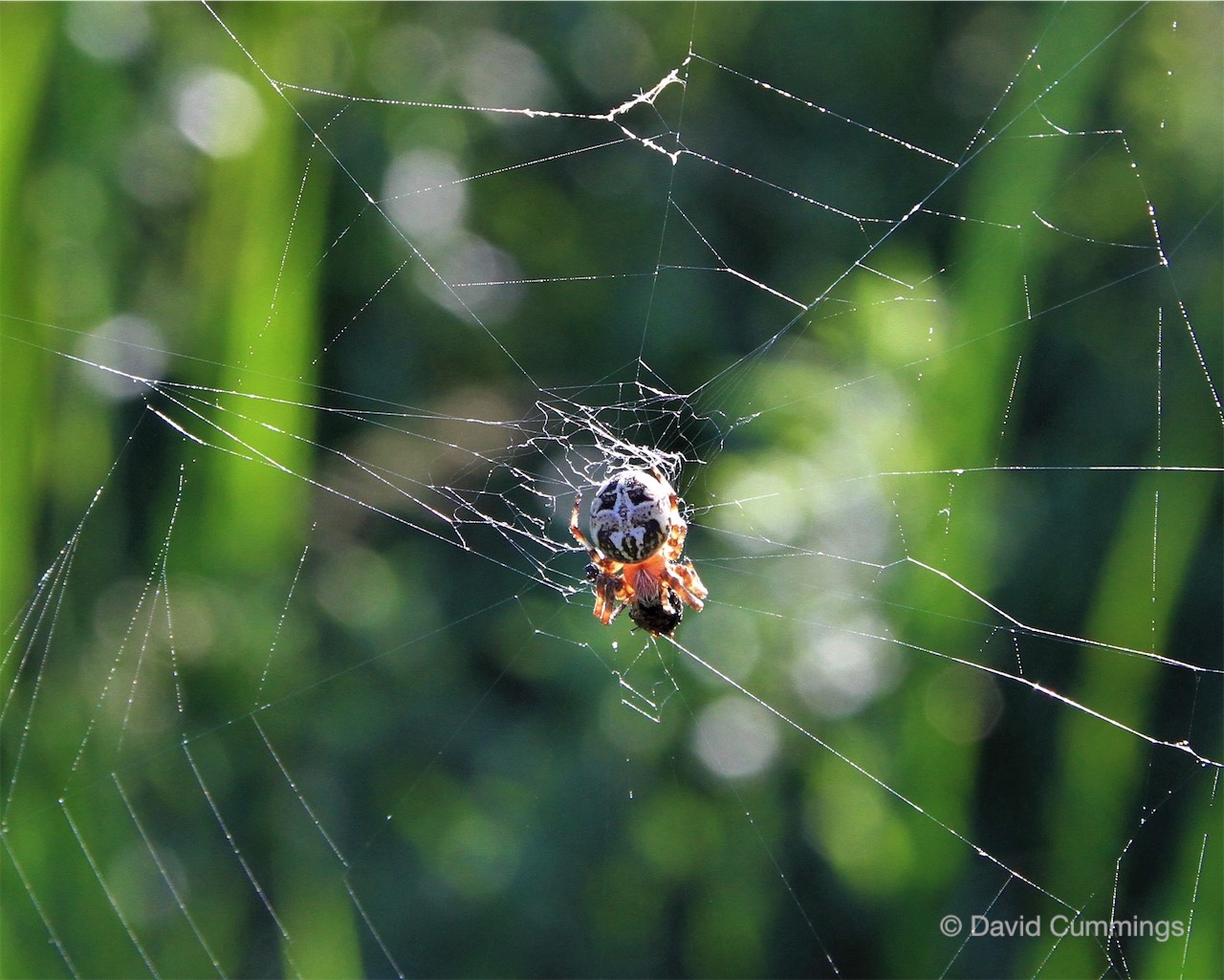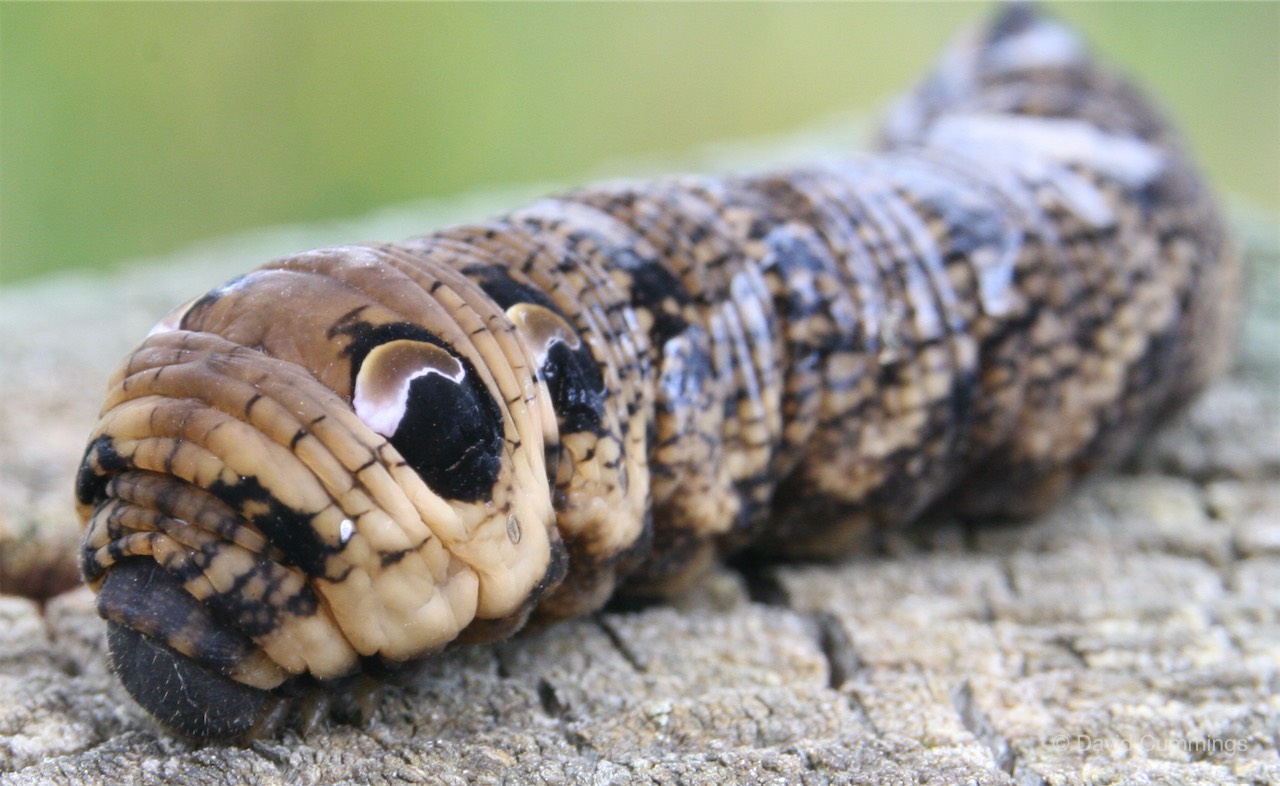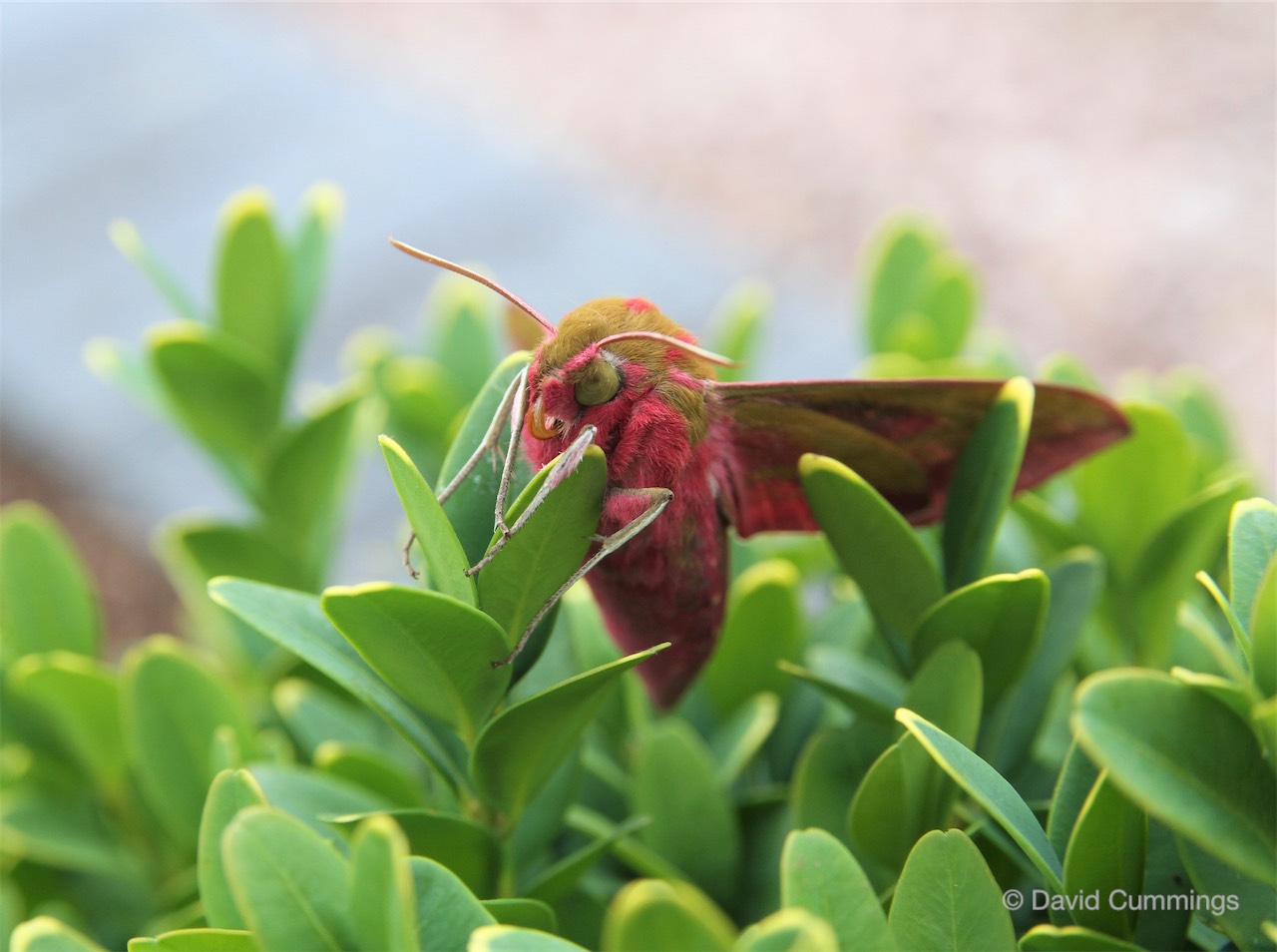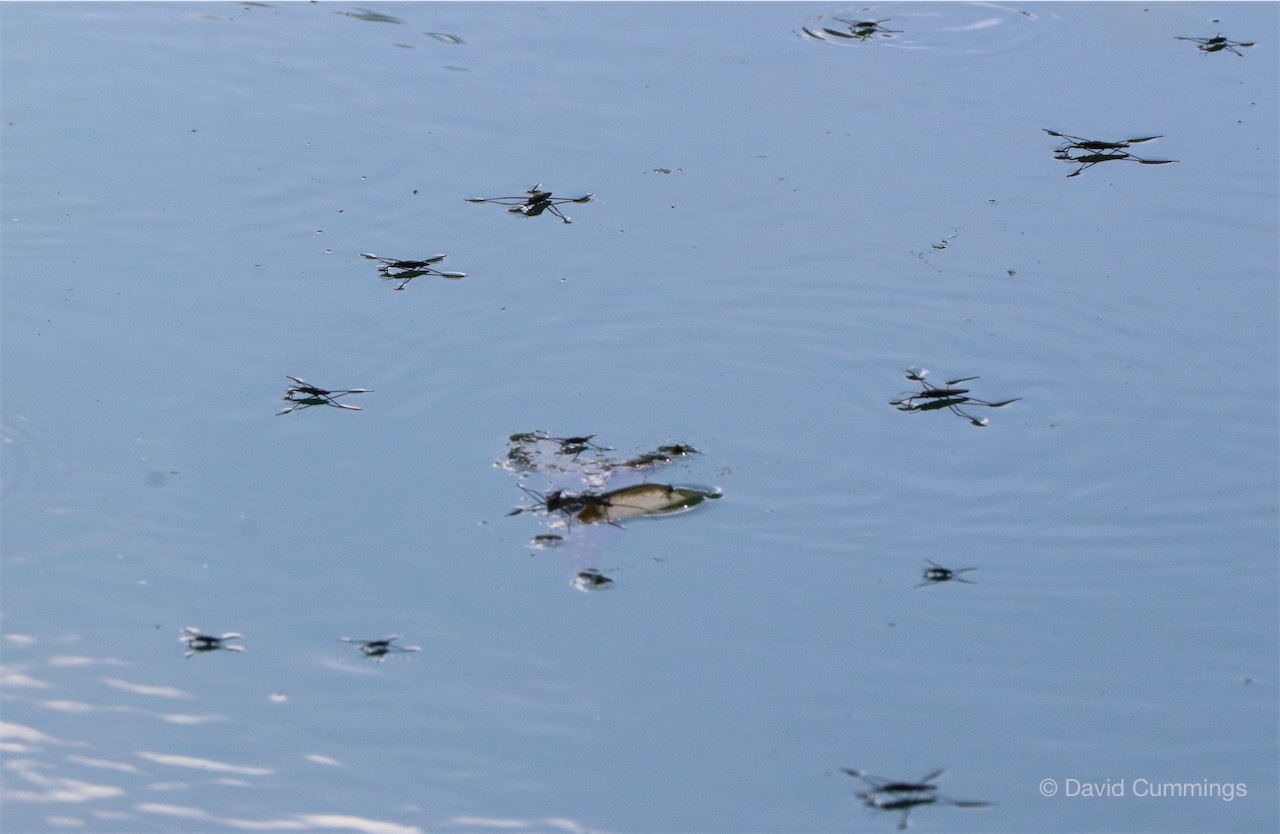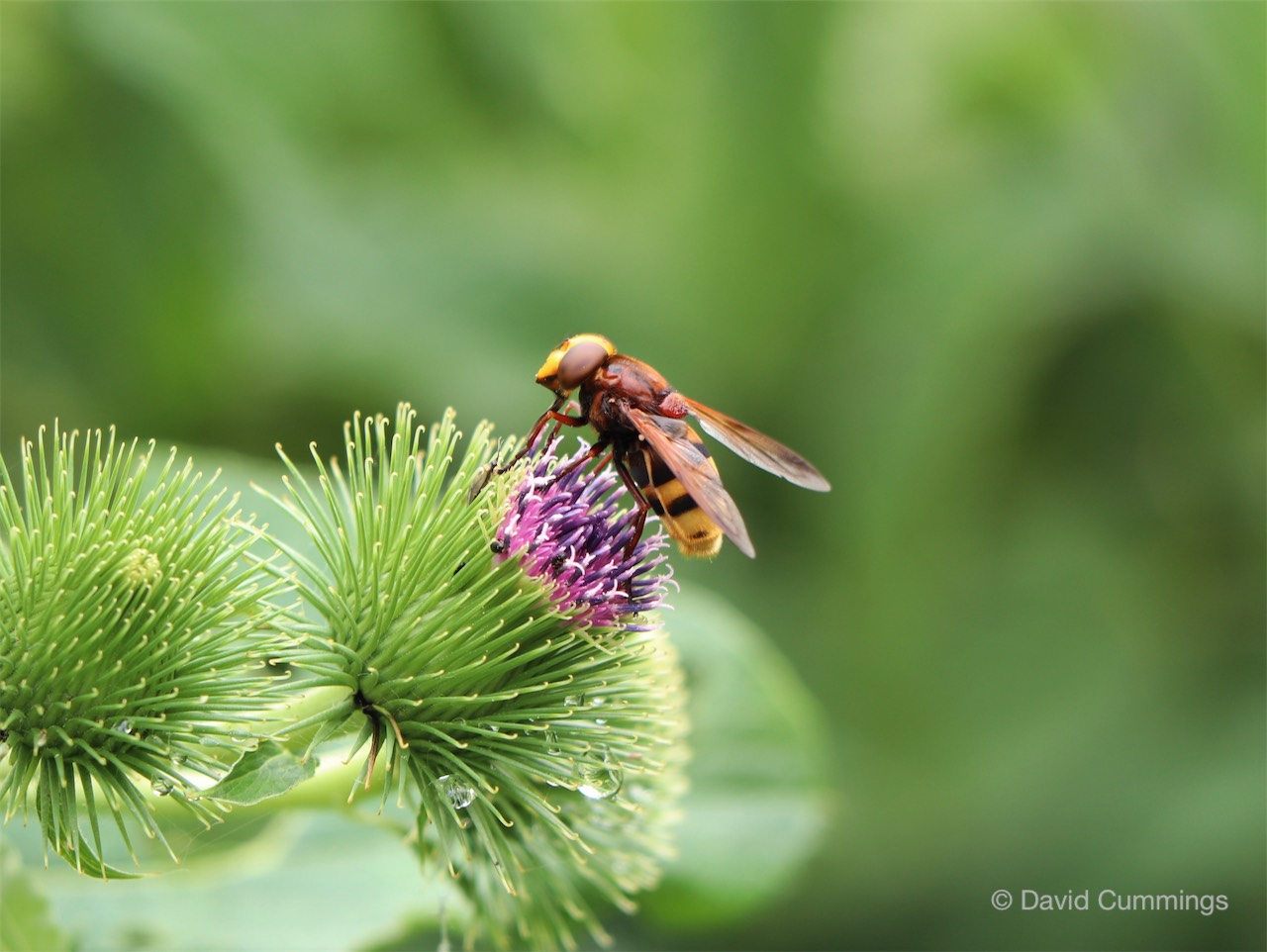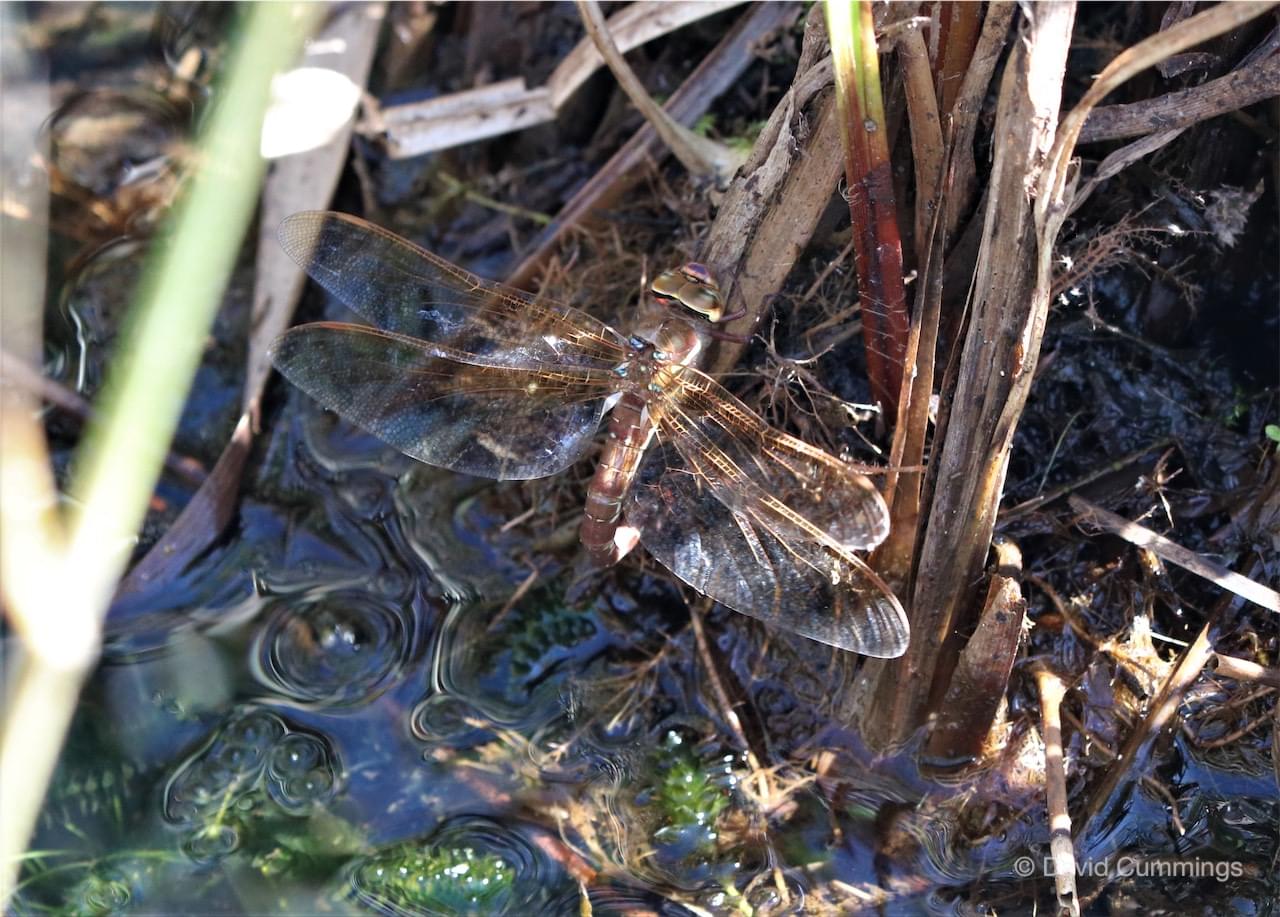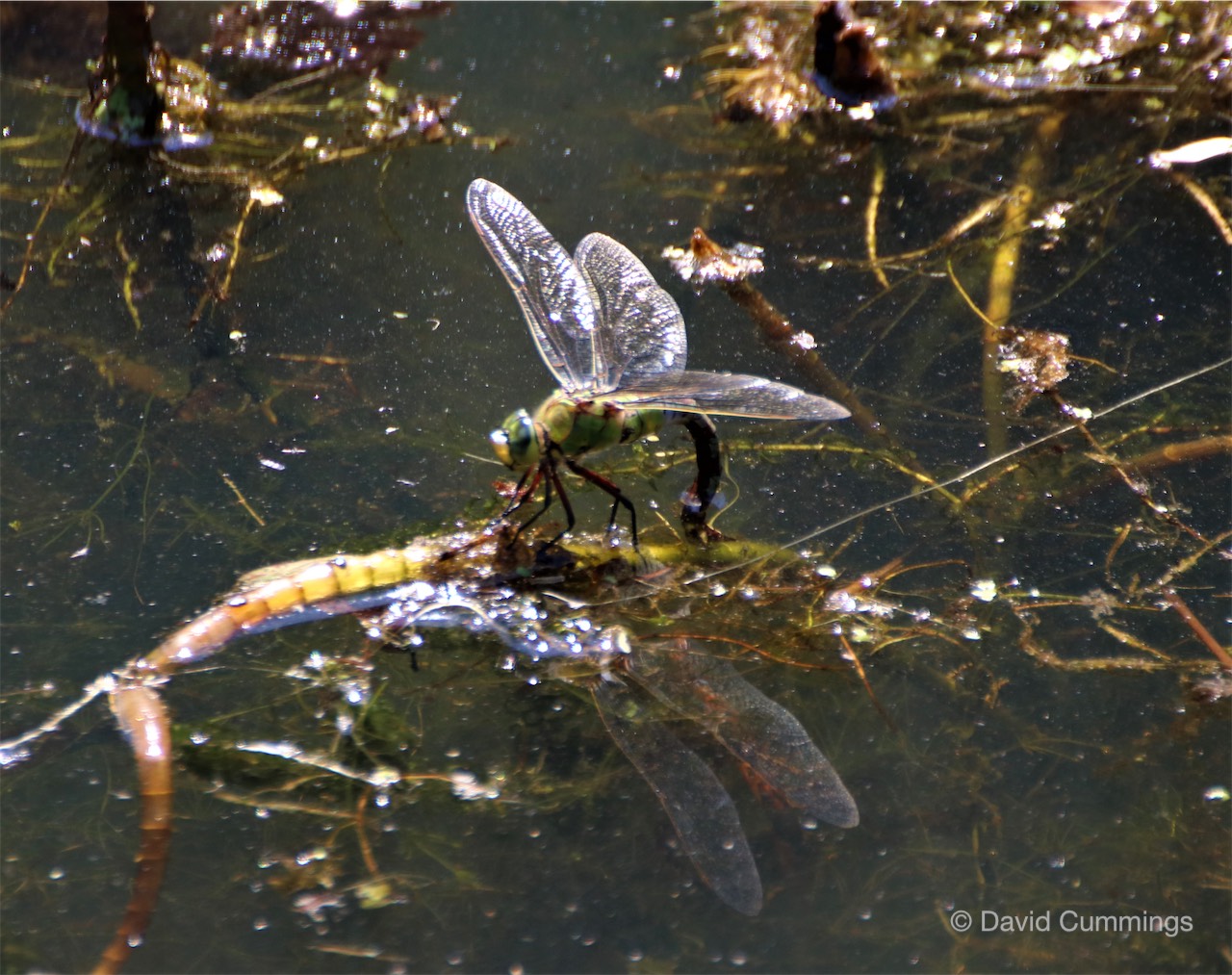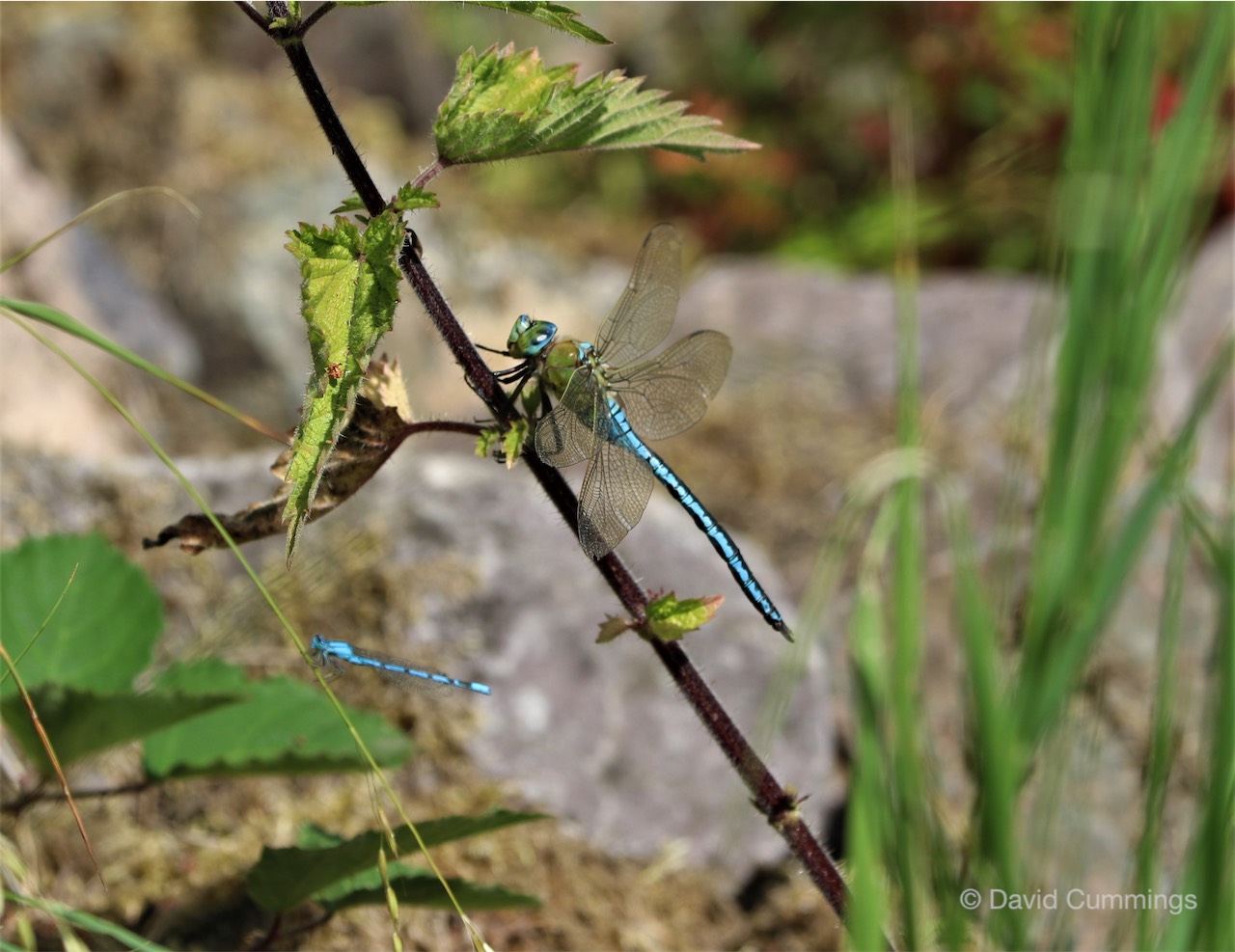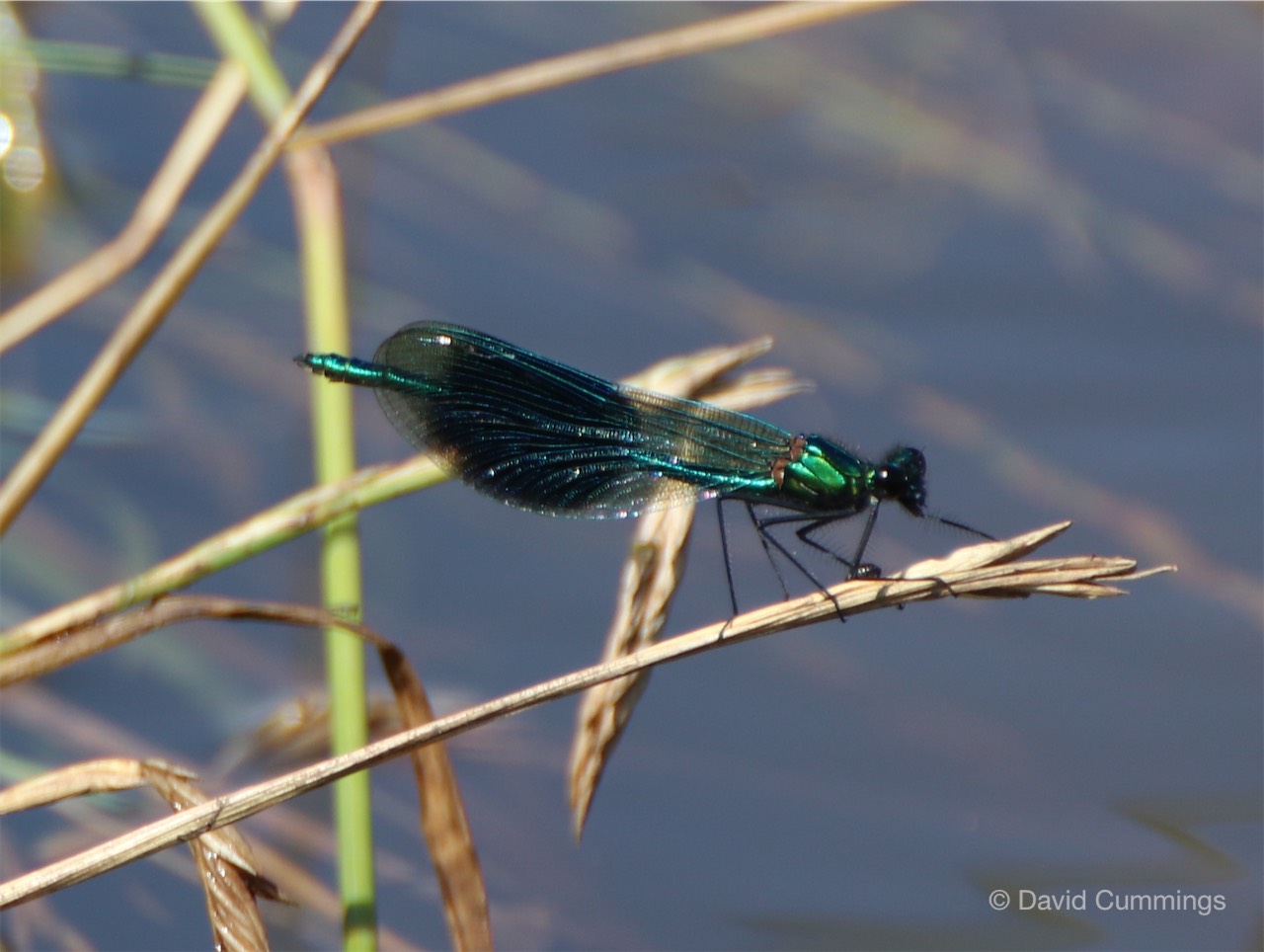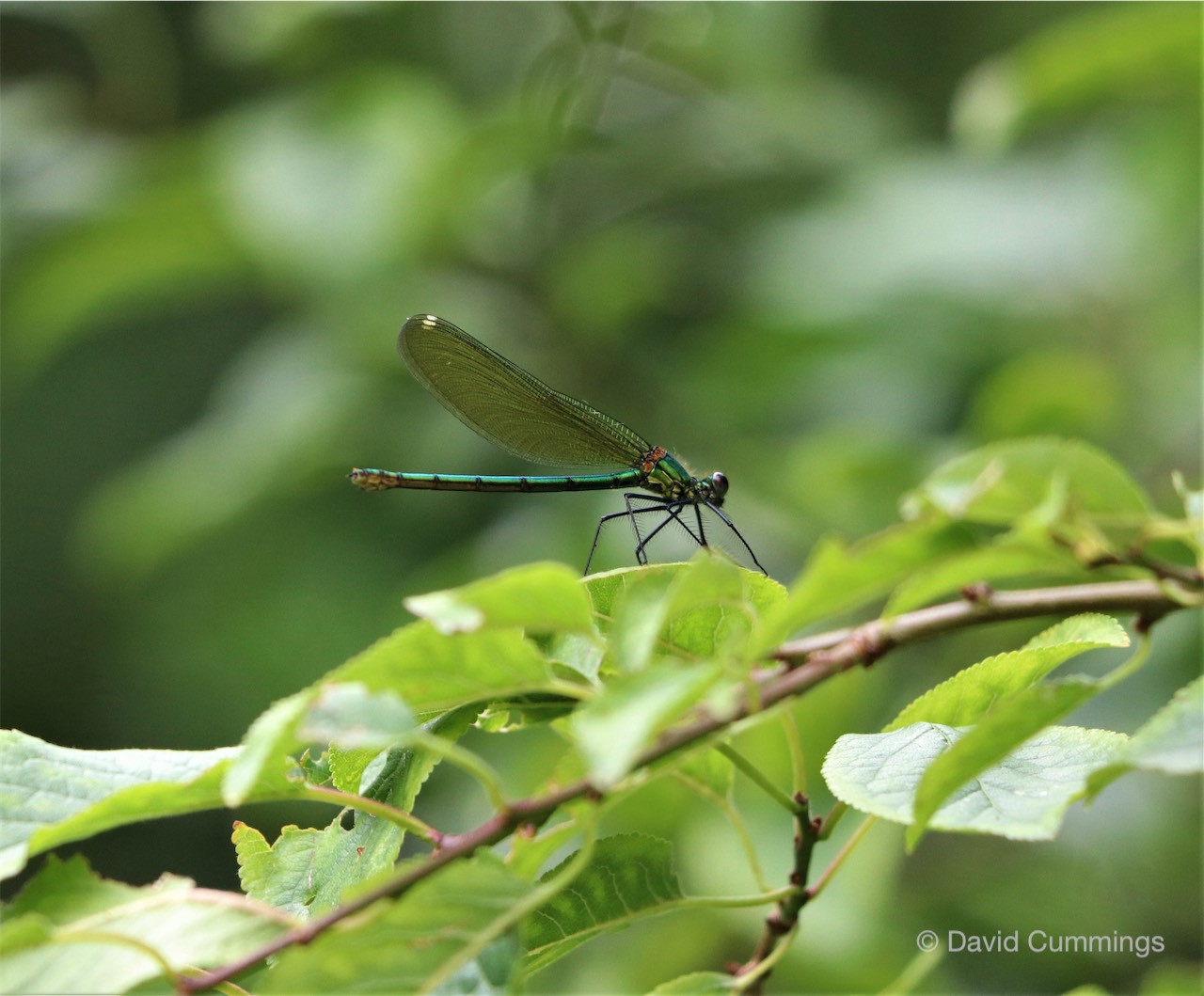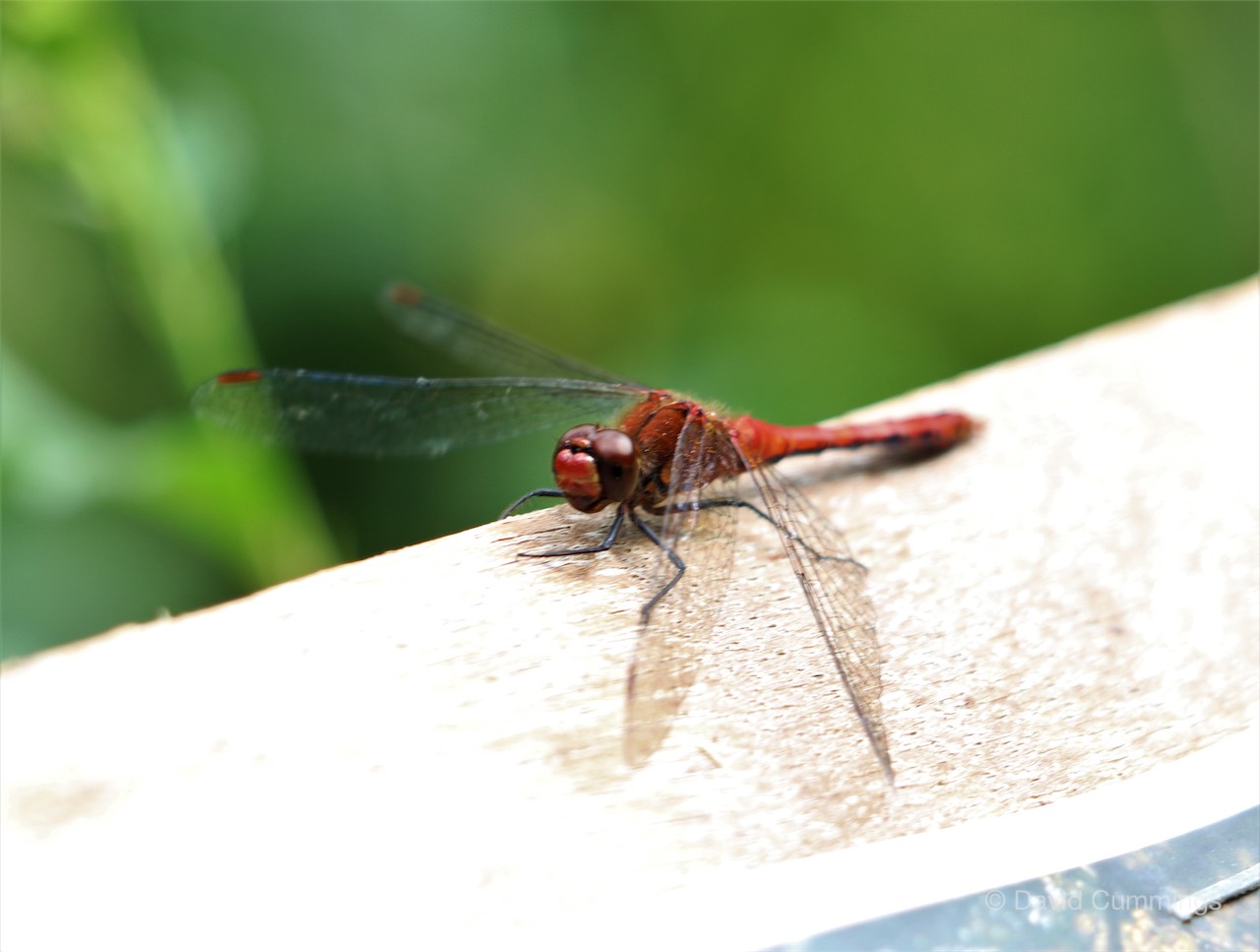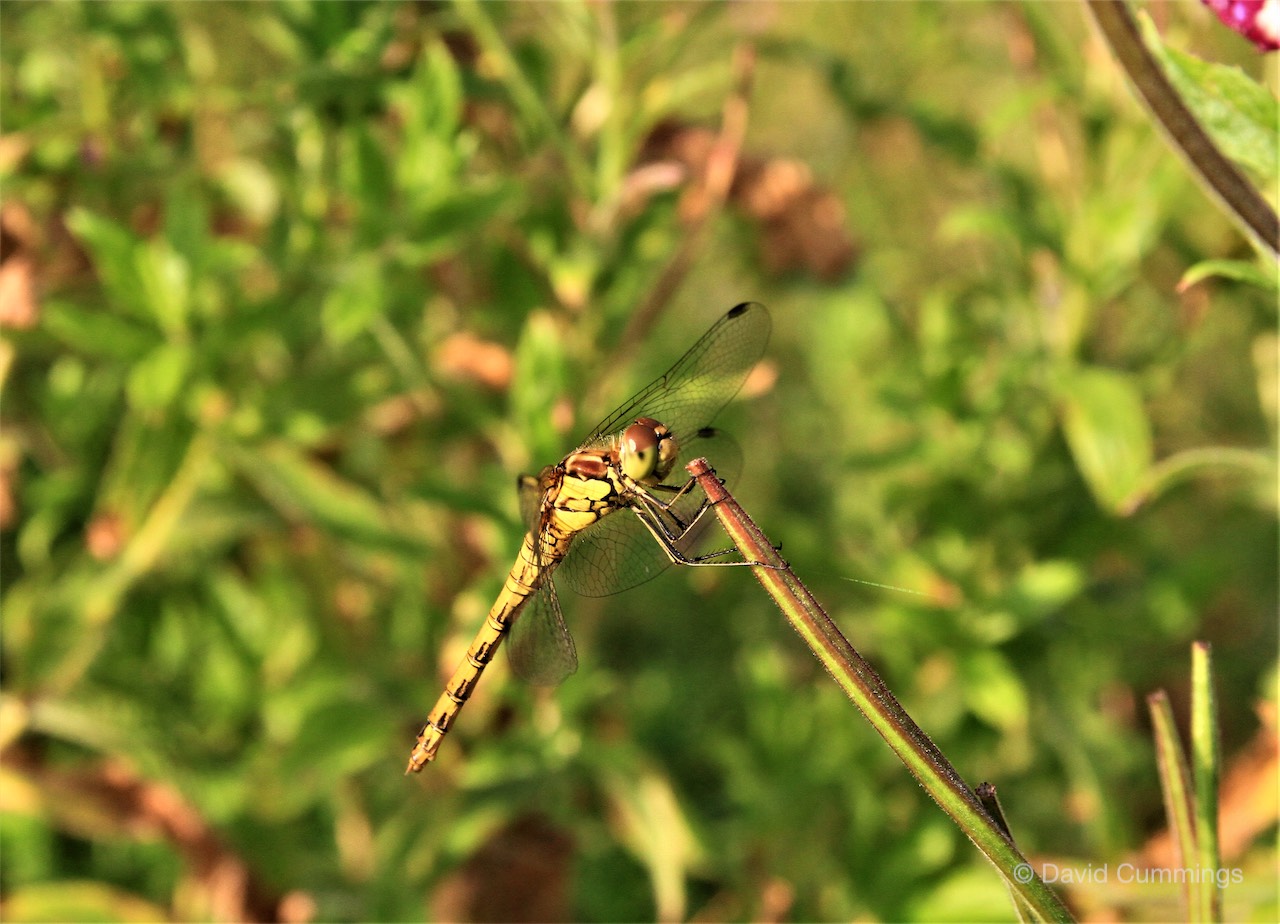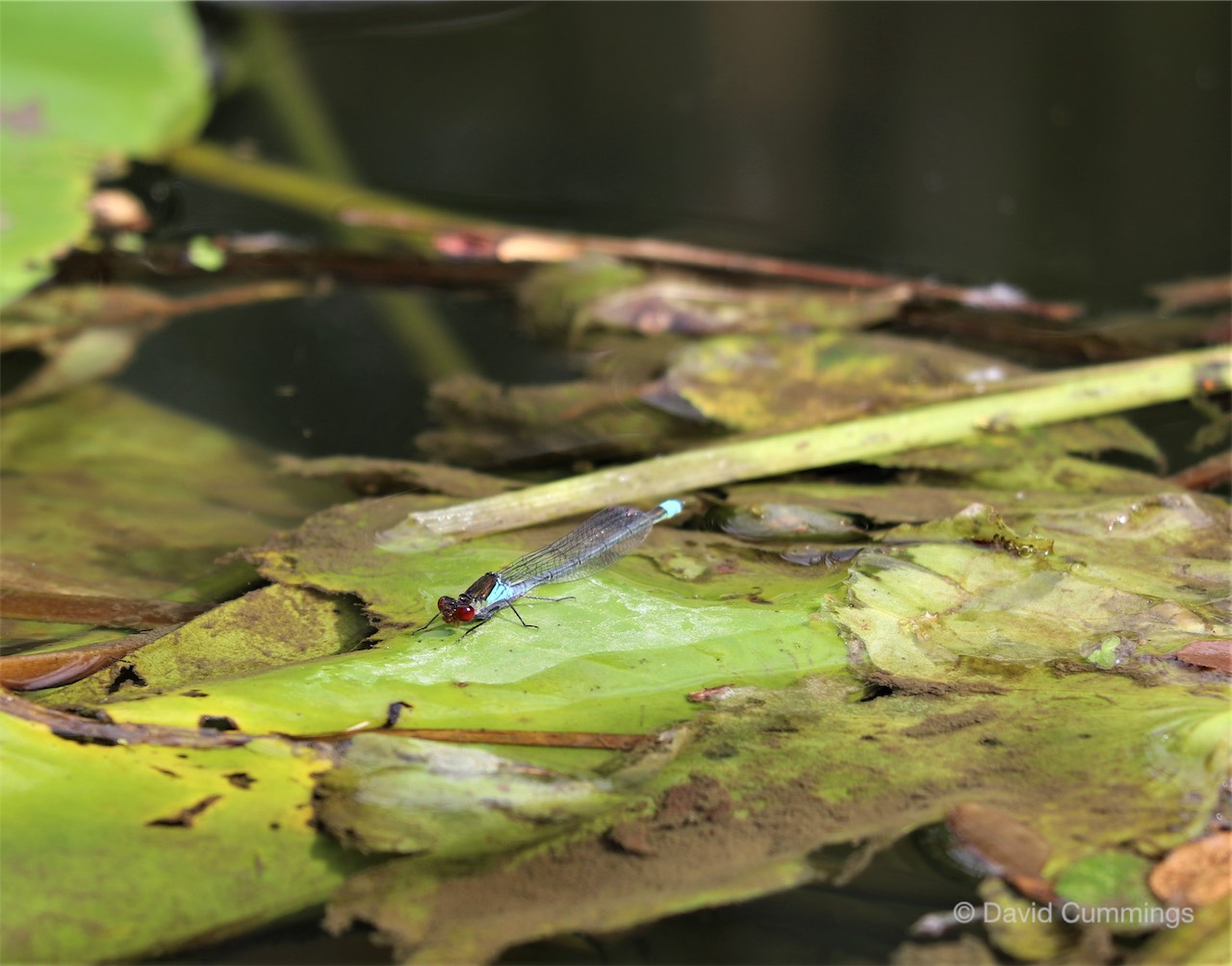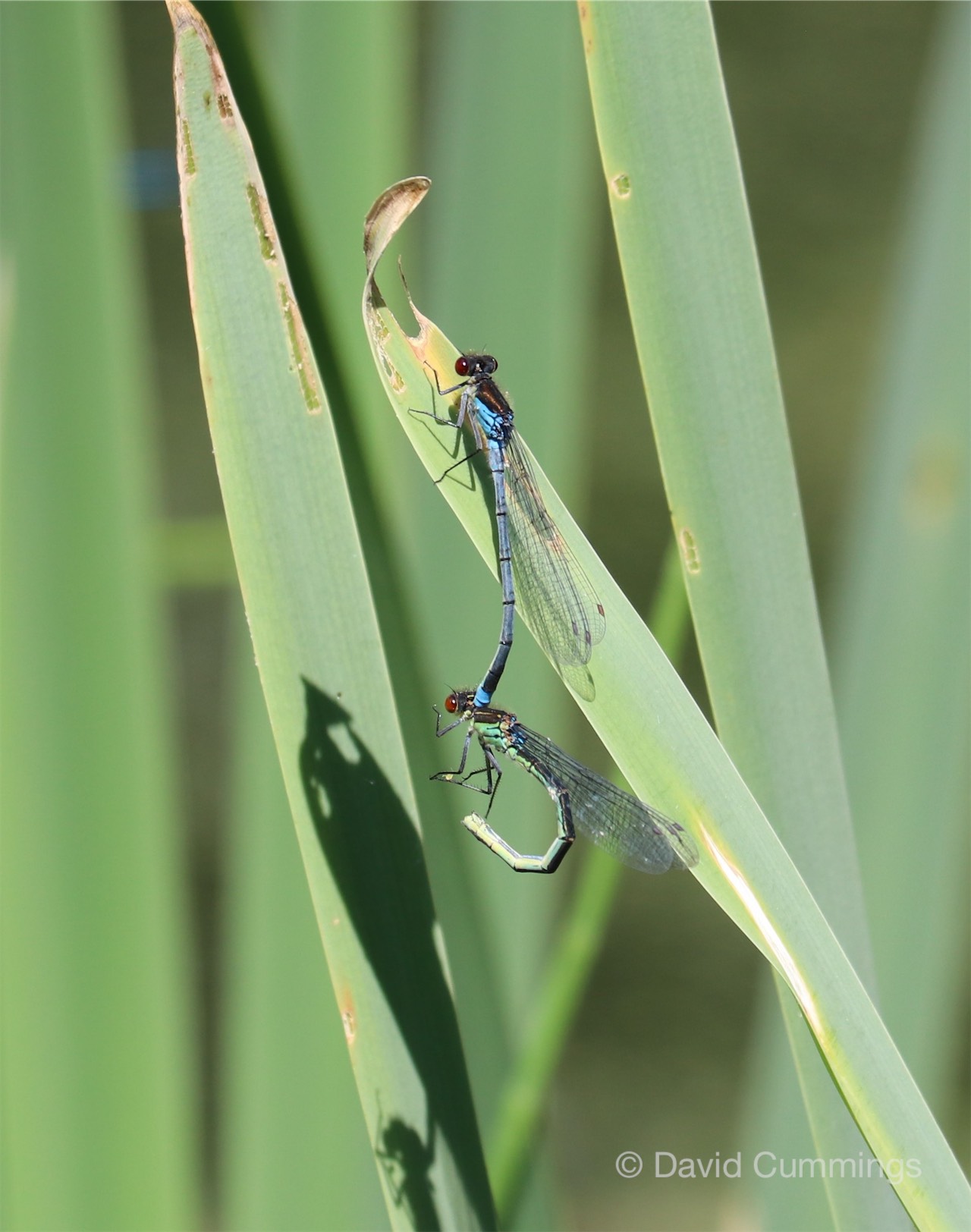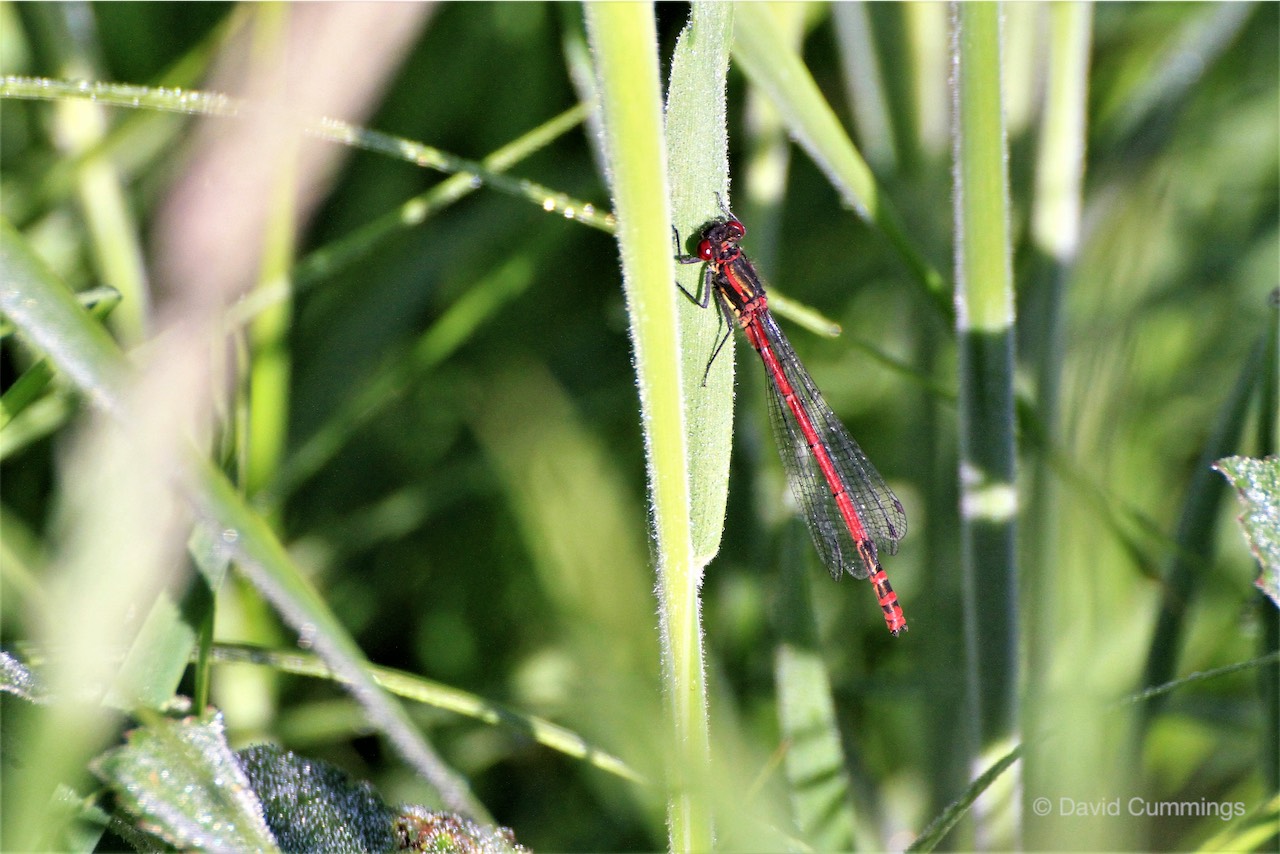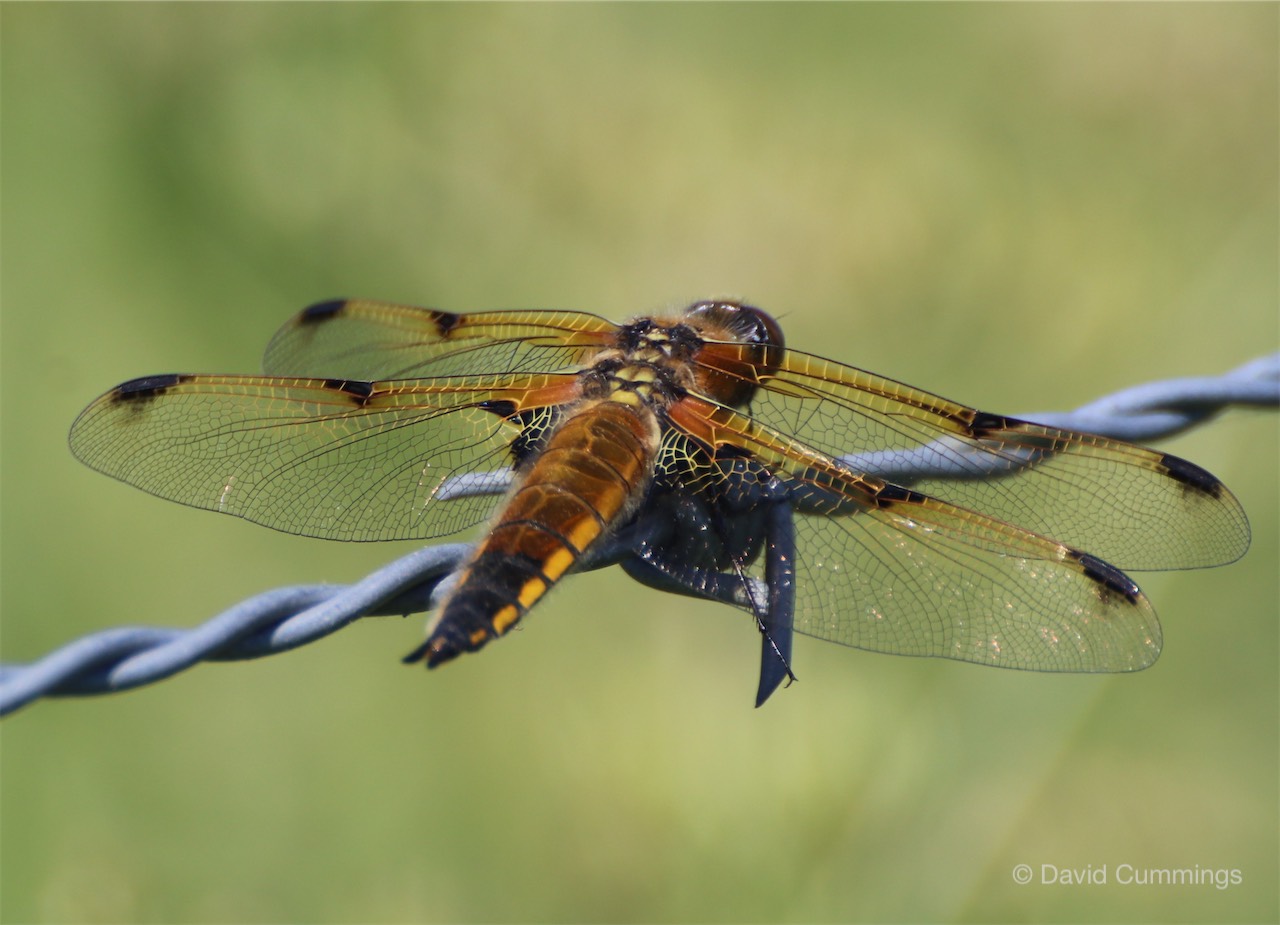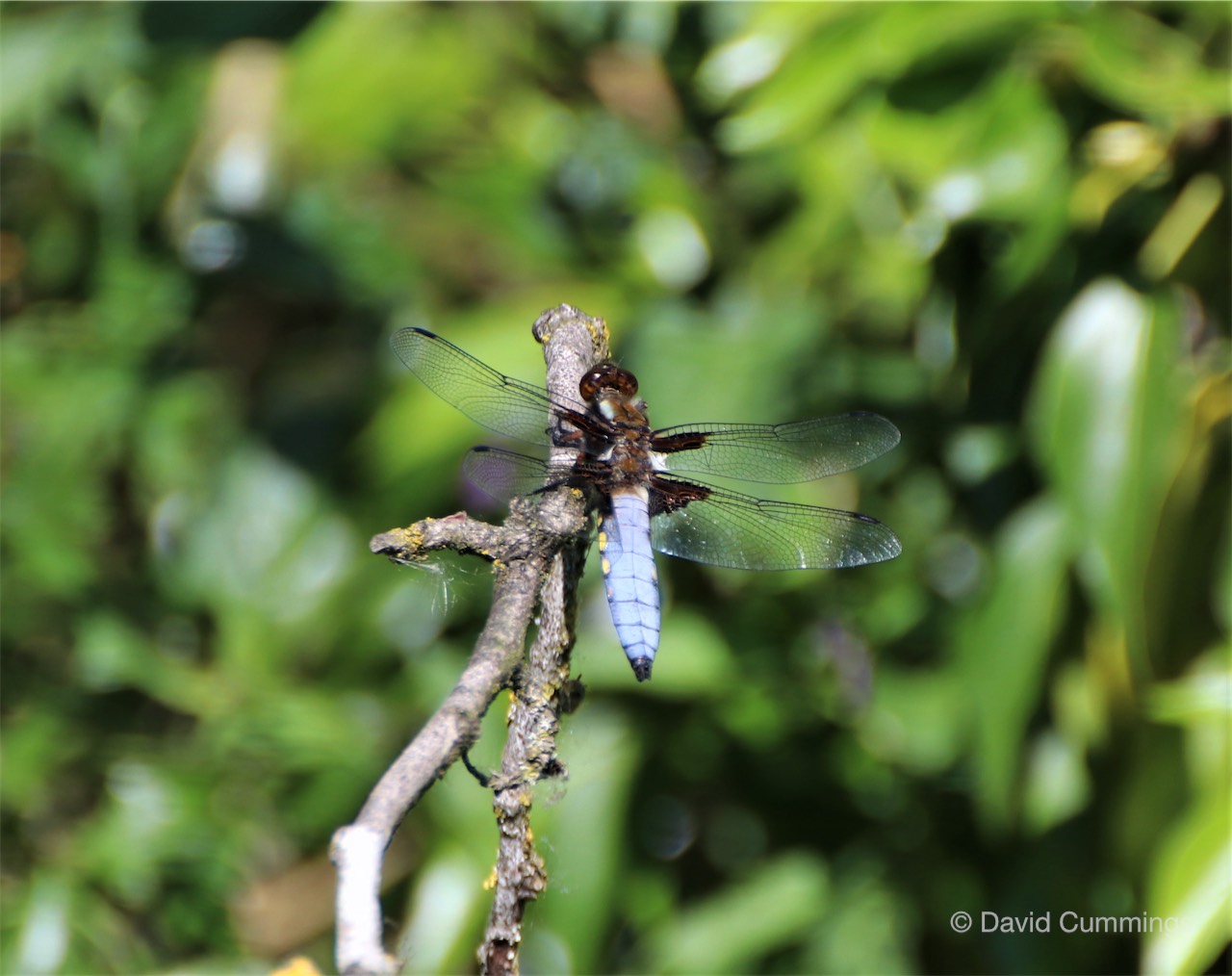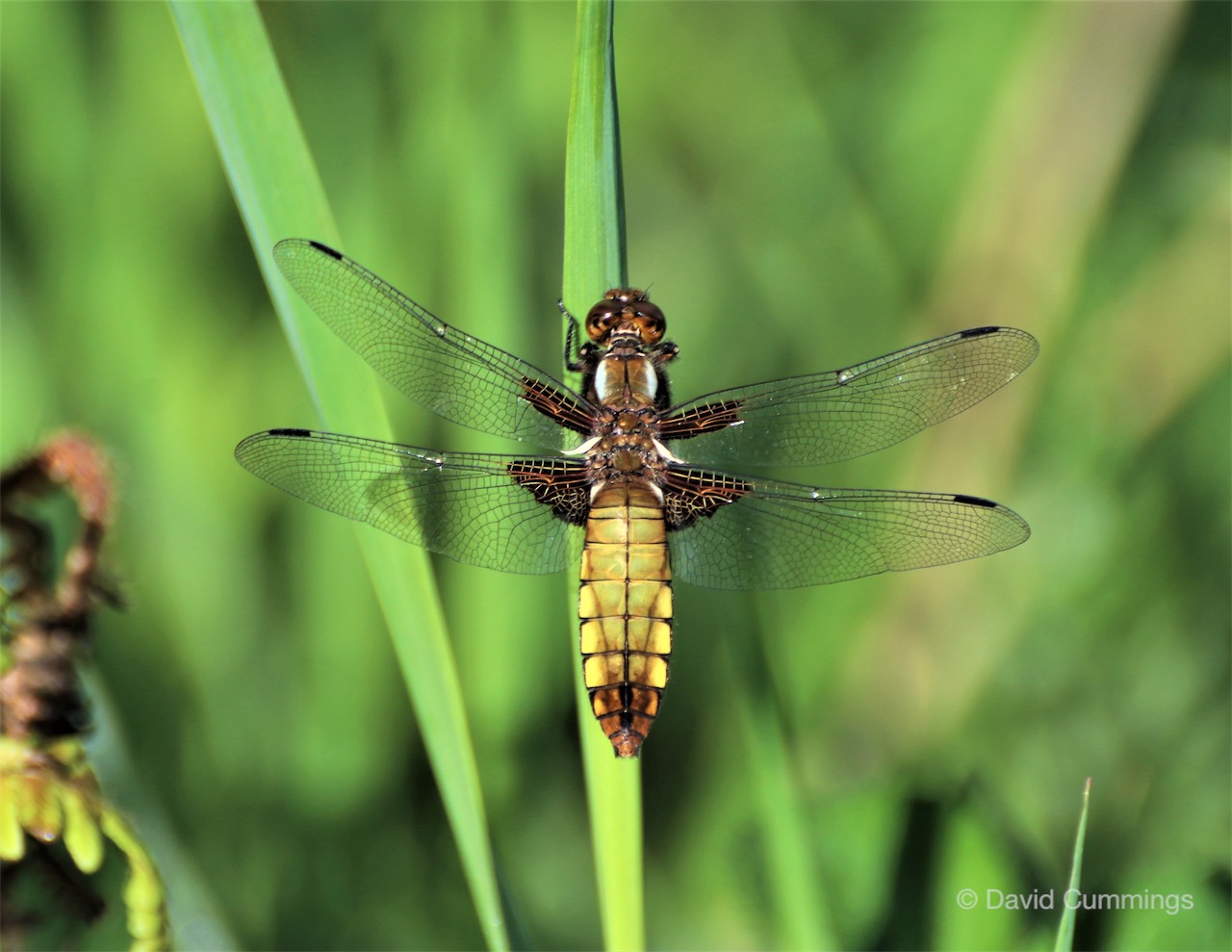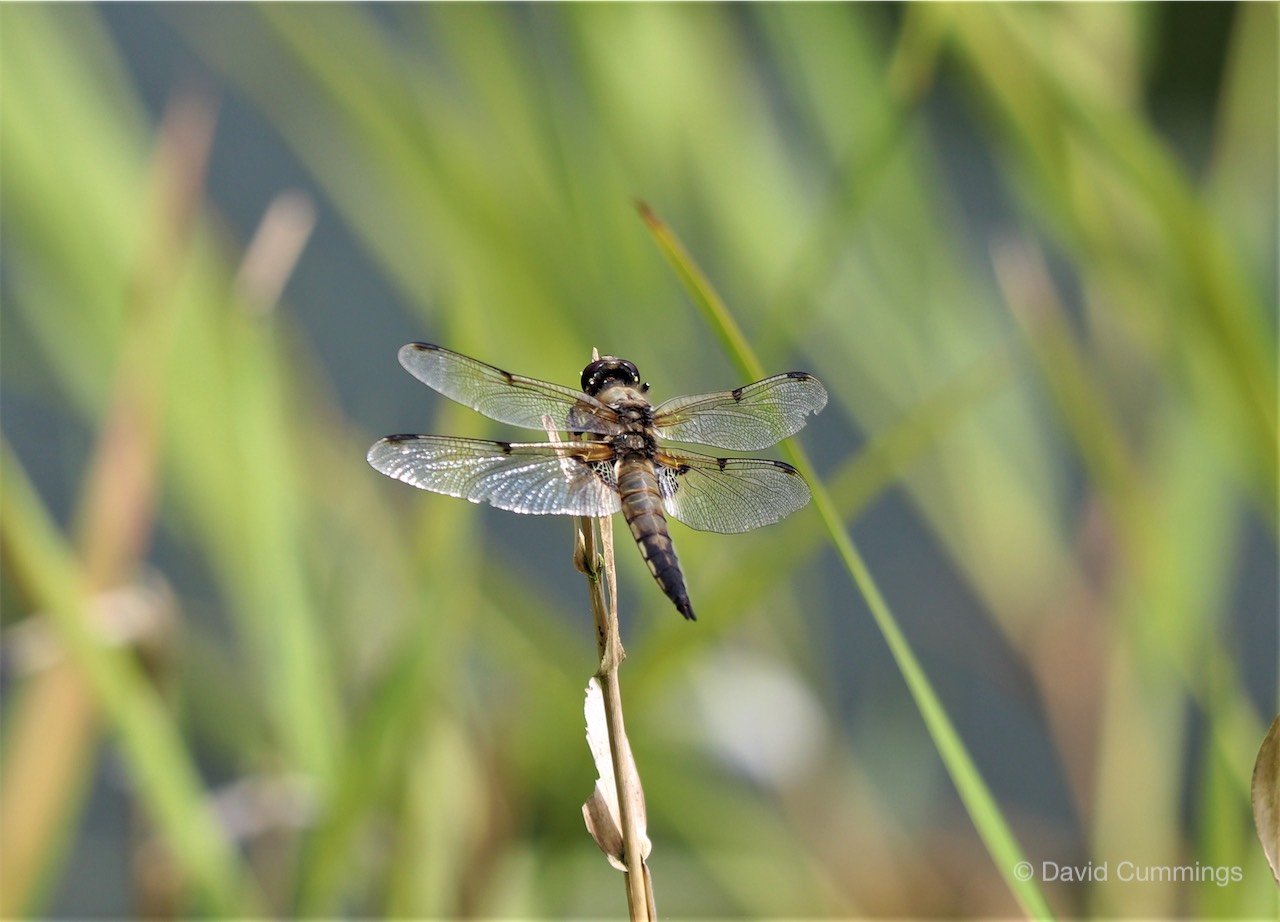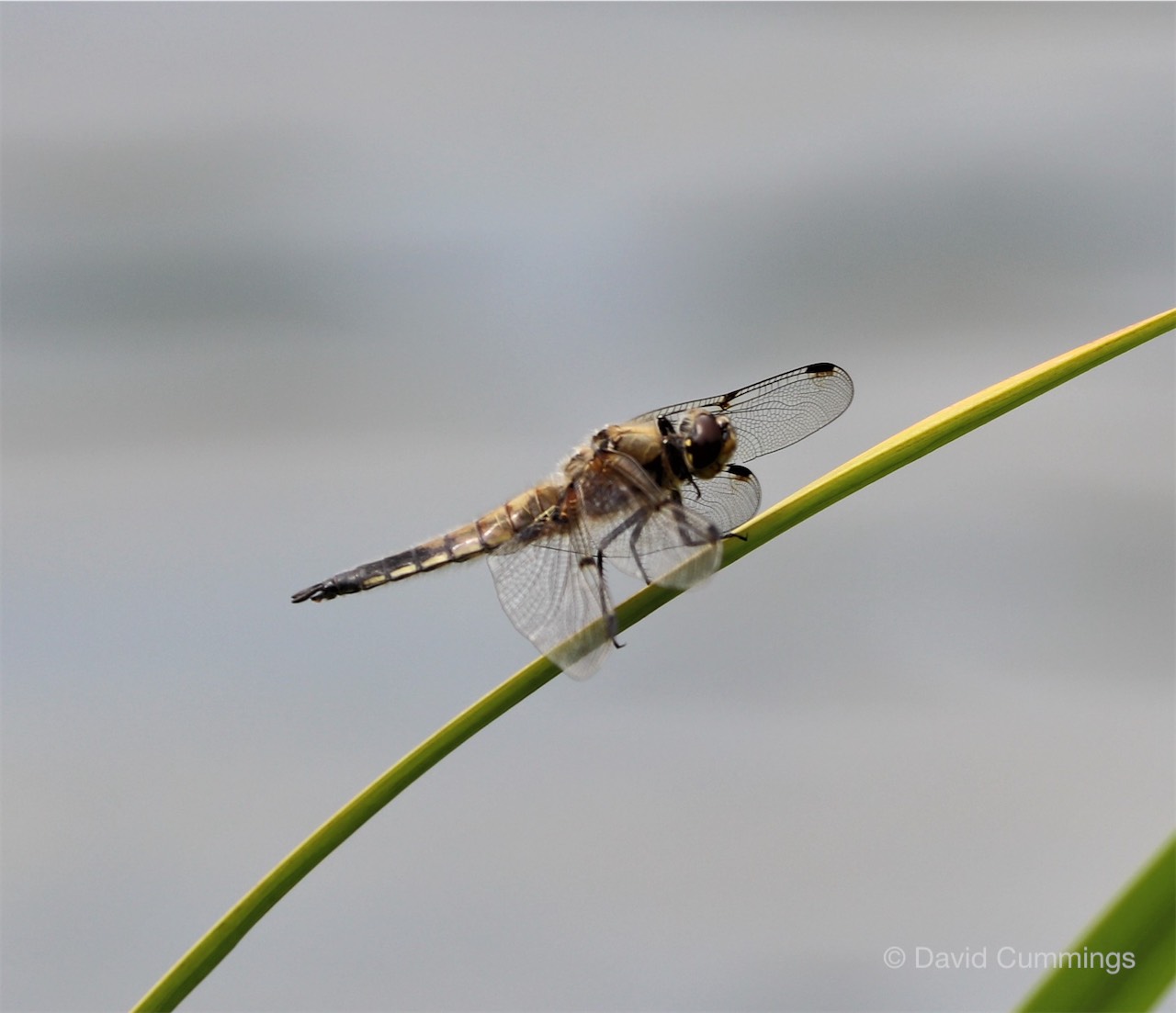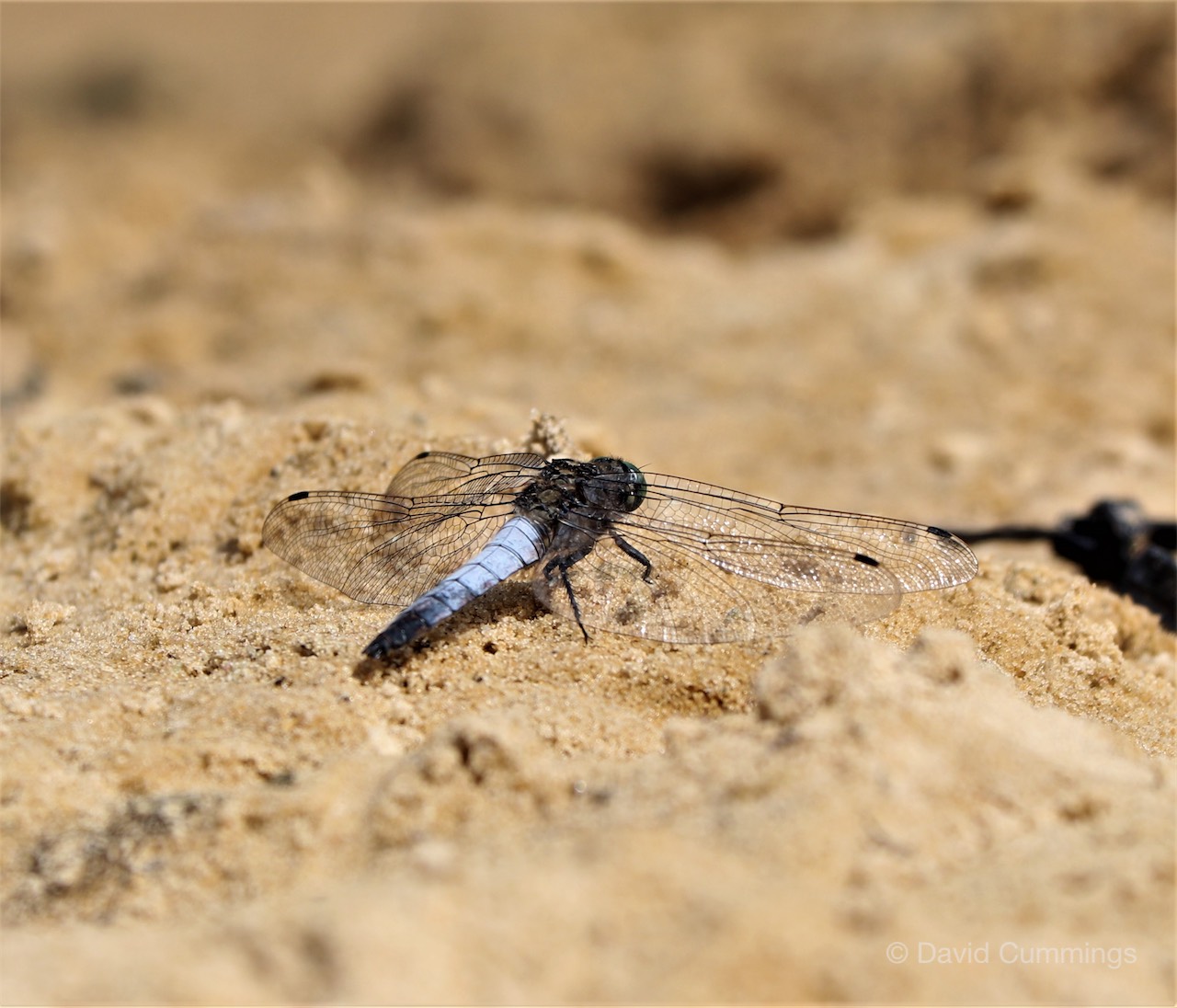

This seems to have been an excellent summer for insects. I guess the hot sunny weather suited them, and I’ve seen some superb examples in various habitats. I have seen a number of orb spiders creating their nests on tall grasses. The one photographed was filmed at Hockenhull Platts, and at times in the autumn tens of hundreds of webs are stretched across the meadow, glistening in the early morning dew. Just recently we came across a humming bird hawk moth, which was hunting for nectar amongst pink flowers. I tried to get a still image, but they are constantly on the move, which makes it very difficult. The one photographed was taken in Vienna, near the Danube.
An elephant hawk moth caterpillar was seen in Christleton crawling across a path. The caterpillars are amongst the biggest you will see, and really quite ugly. When the moth emerges it is magnificent, coloured bright green and purple with the protruding snout which gives the elephant like appearance, and its colouring blends in with green vegetation giving it excellent camouflage. One of my best images of the summer was the great green cricket, a 7cm long insect, found on a very warm summer day at Minsmere RSPB reserve. Everywhere around us the vegetation was scorched brown, so the cricket became very easy to see. I’ve also photographed several hornets, and on numerous occasions seen hundreds of water boatmen on warm still water.
In addition to my 250 or so butterfly sightings this spring and summer, dragonfly sightings have also been excellent, with colourful smaller damselflies sadly down on numbers, although we recently had a common darter in the garden. My best photographs include a brown hawker egg laying, a resting Emperor dragonfly, and several excellent shots of the colourful banded agrion damselflies. These are easily seen on rivers and ponds, the males looking like miniature helicopters which easily outnumber the olive green females. The males are basically blue-green in colour with dark spots on their wings, which flutter when they hover over river plants, giving them the appearance of being mini helicopters. The best sightings of this species in the Parish are along the banks of the Gowy, but they can appear along the canal and in people’s gardens. I’ve also seen really good specimens of male and female common darters, as well as more and more sightings of red eyed blue damselflies. I hadn’t seen red eyed blues in this area until a couple of years ago on the hidden pond at Walk Mill, but they seem to have increased their range, so are more visible these days. You have to look carefully, however, as they look like common blue damselflies but with these distinctive red eyes, as you can observe in the photographs. I have recorded a few red damselflies this season, but my most numerous sightings have been of 4 spotted chasers, broad bodied chasers and black tailed skimmers, all photographed below.
Swallows are still gathering in good numbers from day to day at Croft Close, resting on wires after hawking over the farm fields and canal, catching insects to fuel them up for their long flights ahead. In recent days I’ve noticed more and more house martins feeding over the Pit and Legion Meadow. These are perhaps second or even third clutches, as although numbers are down generally, those that are here, have done well over the long hot summer. Look out for lots of wild arum in the hedgerows, small stalks with clusters of bright red berries. We’ve seen lots of examples on almost every walk recently so I’ll feature them in next months Wildlife Watch page.
LISTEN TO RYAN INSTEAD OF READING THE ARTICLE
-

Orb Spider
-

Humming Bird Hawk Moth
-

Elephant Hawk Moth
-

Elephant Hawk Moth
-

Giant Green Cricket
-

Giant Green Cricket
-

Water Boatmen
-

Hornet
-

Brown Hawker Laying
-

9 Emperor egg laying
-

Emperor
-

Banded Agrion female
-

Banded Agrion Damselfly
-

Common Darter male
-

Common Darter
-

Red Eyed Blue Damselfly
-

Redeyed Blue Damselflies mating
-

Red Damselfly
-

Four Spotter Chaser
-

Broad Bodied Chaser
-

Broad Bodied Chaser
-

Male Hawker
-

Black Tailed Skimmer
-

Black Tailed Skimmer

